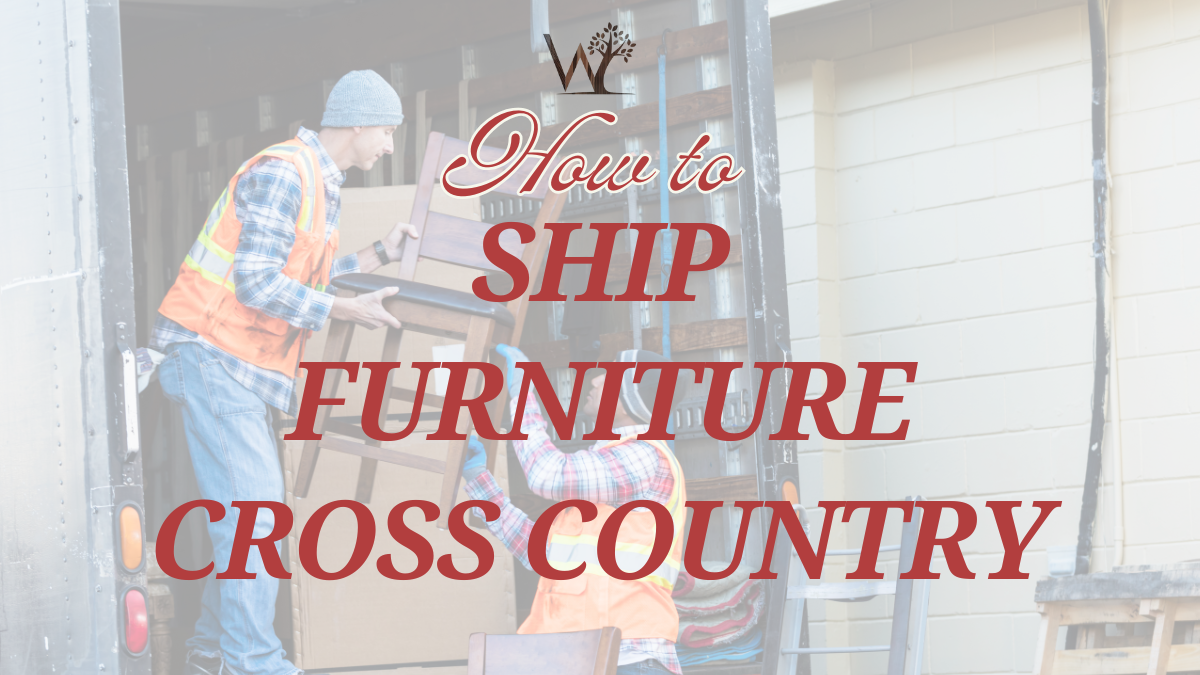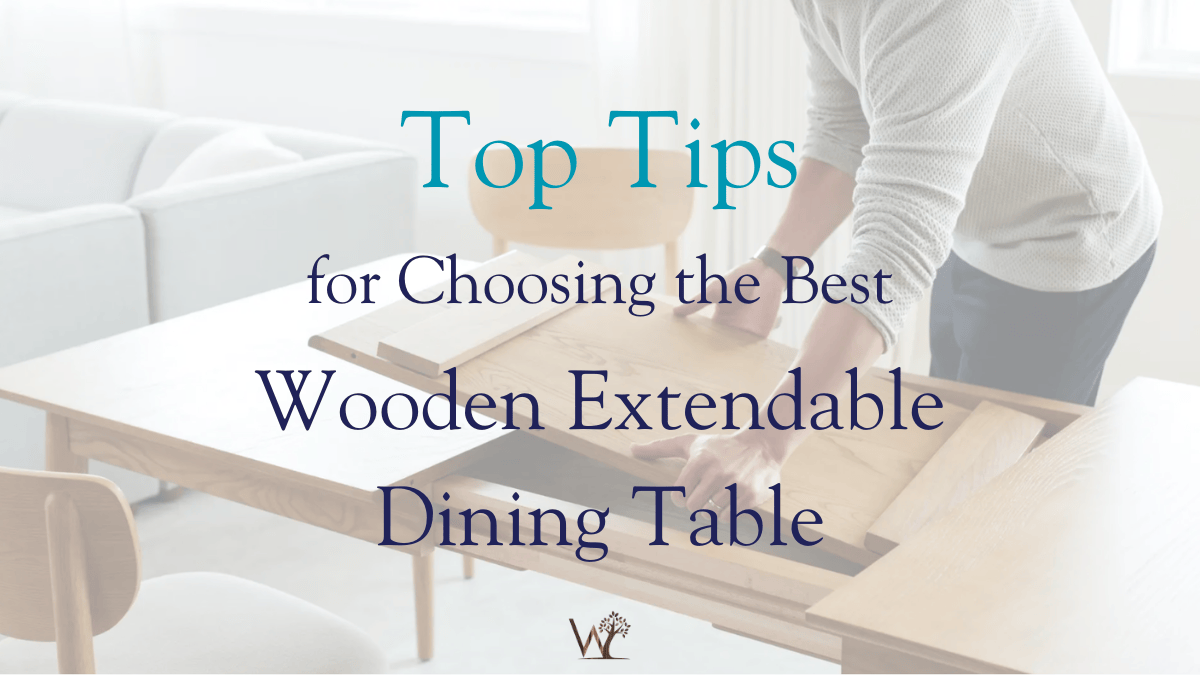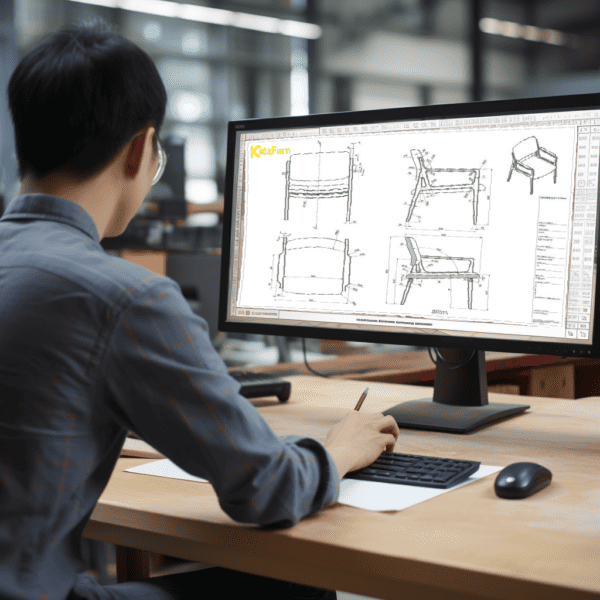Rubber wood furniture is everywhere. You’ve seen it in sleek modern dining sets, sturdy work desks, and even elegant bedroom pieces. But here’s the real question—is it built to last?
Durability is a dealbreaker when investing in furniture. No one wants a beautiful piece that warps, cracks, or crumbles after a few years. That’s why understanding what makes rubber wood strong (or weak) is crucial before you buy.
Here’s the short answer: Yes, rubber wood furniture is durable—but only if properly maintained. It’s a solid, affordable, and eco-friendly option, but things like moisture, finishing, and care can make or break its lifespan. Let’s dive into the details!
I. What is Rubber Wood Furniture?
1. Understanding Rubberwood
Rubberwood, derived from the Pará rubber tree (Hevea brasiliensis), is a type of hardwood primarily cultivated in Southeast Asia.
Initially grown for latex production, these trees are harvested for their wood once they cease latex production, typically after 25-30 years. This practice not only provides a secondary use for the trees but also promotes sustainable forestry, making rubberwood a popular choice for eco-friendly furniture.
2. Rubberwood vs. Other Common Woods
When considering furniture materials, it’s essential to compare rubberwood with other commonly used woods to understand its strengths and limitations.
Comparison of Rubberwood with Other Woods
| Wood Type | Strength | Durability | Water Resistance | Affordability |
|---|---|---|---|---|
| Rubberwood | Moderate | Moderate | Low | High |
| Oak | High | High | Moderate | Moderate |
| Teak | High | High | High | Low |
| Engineered Wood | Low | Low | Low | High |
| MDF | Low | Low | Low | High |
As seen in the table, rubberwood offers moderate strength and durability but lacks significant water resistance. Its affordability and sustainable sourcing make it an attractive option for indoor furniture. However, for pieces exposed to heavy wear or moisture, woods like oak or teak might be more suitable choices.
II. Is Rubber Wood Durable? Key Factors to Consider
1. Rubberwood Hardness and Strength
Rubberwood is considered a medium-density hardwood, offering a balance between strength and workability. On the Janka hardness scale, which measures wood’s resistance to wear and denting, rubberwood scores around 980 lbf, placing it above softwoods like pine but below hardwoods like maple and oak.
This rating indicates that while rubberwood is reasonably strong, it may be more susceptible to dents and scratches compared to denser hardwoods. It’s essential to consider this when selecting furniture for high-traffic areas or heavy use.
2. Rubber Wood Lifespan and Longevity
The lifespan of rubberwood furniture largely depends on factors such as moisture exposure, finishing, and maintenance. Proper sealing and finishing can protect the wood from moisture, which rubberwood is particularly sensitive to. Regular maintenance, including cleaning and occasional refinishing, can significantly extend the life of rubberwood furniture.
However, without proper care, rubberwood may be prone to warping or swelling due to its higher moisture absorption rate compared to other hardwoods.
III. Rubberwood vs. Hardwood: Which One is Better?
When choosing furniture, it’s essential to weigh the characteristics of rubberwood against traditional hardwoods like oak and teak. Each wood type offers unique benefits and drawbacks that can influence your decision.
1. Rubberwood vs. Oak & Teak
- Strength & Hardness: Oak and teak are renowned for their exceptional hardness and strength, making them ideal for high-traffic areas and heavy-use furniture. Rubberwood, while moderately strong, is more flexible, which can be advantageous in certain furniture designs. However, it may not withstand heavy wear and tear as effectively as oak or teak.
- Water Resistance: Teak naturally possesses high oil content, rendering it highly resistant to water and decay—an excellent choice for outdoor or moisture-prone environments. Oak offers moderate water resistance but can benefit from protective finishes. In contrast, rubberwood is susceptible to moisture and requires proper sealing to prevent warping or swelling.
- Affordability: Rubberwood stands out as a cost-effective alternative, offering a similar aesthetic to more expensive hardwoods at a fraction of the price. This affordability makes it accessible for those seeking quality furniture without breaking the bank. Oak and teak, while durable and prestigious, come with a higher price tag due to their desirable properties and longer growth periods.
2. Rubberwood vs. Engineered Wood & MDF
When comparing rubberwood to engineered wood products like Medium-Density Fiberboard (MDF), several factors come into play.
Pros of Rubberwood:
- Natural Aesthetic: Rubberwood offers the beauty of natural wood grain, providing an authentic look that many homeowners appreciate.
- Durability: As a solid wood, rubberwood tends to be more durable than engineered products, especially when properly maintained.
Cons of Rubberwood:
- Moisture Sensitivity: Without adequate sealing, rubberwood can absorb moisture, leading to potential warping.
Pros of Engineered Wood & MDF:
- Stability: Engineered woods are designed to resist warping and can offer greater stability in fluctuating climates.
- Cost-Effectiveness: Typically, these materials are more affordable than solid woods, making them a popular choice for budget-conscious projects.
Cons of Engineered Wood & MDF:
- Durability: Engineered woods generally lack the longevity of solid woods and can be more susceptible to damage over time.
- Aesthetic Limitations: They often lack the natural grain patterns of solid wood, which can be a drawback for those seeking a genuine wood appearance.
In summary, while engineered woods and MDF offer affordability and stability, solid woods like rubberwood provide a natural aesthetic and durability that many find appealing. Your choice should align with your specific needs, budget, and the intended use of the furniture.
IV. Water Resistance and Moisture Sensitivity of Rubberwood
Understanding how rubberwood interacts with moisture is crucial for its longevity and performance in various environments.
1. Is Rubberwood Water Resistant?
Rubberwood is not inherently water-resistant. Its porous nature means it can readily absorb moisture, which may lead to warping, swelling, or even fungal growth if exposed to high humidity or direct water contact. Therefore, it’s advisable to use rubberwood primarily in indoor settings where exposure to moisture is minimal.
2. How to Protect Rubberwood from Moisture
To enhance the durability of rubberwood furniture and safeguard it against moisture-related issues, consider the following steps:
- Apply High-Quality Finishes: Utilizing durable finishes, such as polyurethane, creates a protective barrier that minimizes moisture absorption. This layer not only preserves the wood’s appearance but also extends its lifespan.
- Avoid Placement in Damp Areas: Positioning rubberwood furniture away from areas prone to dampness, like basements or bathrooms, reduces the risk of moisture-related damage. Maintaining a stable indoor environment with controlled humidity levels further aids in preservation.
- Regular Maintenance: Consistently applying wood conditioners or sealants helps maintain the integrity of the protective finish. Regular inspections for signs of wear or damage allow for timely repairs, preventing minor issues from escalating.
By implementing these protective measures, you can significantly enhance the resilience of your rubberwood furniture, ensuring it remains a beautiful and functional part of your home for years to come.
V. Is Rubber Wood Termite Resistant?
Understanding the susceptibility of rubberwood to pests is crucial for its longevity and maintenance.
1. Natural Resistance to Pests
Rubberwood is not naturally resistant to termites. In its untreated state, it is vulnerable to termite infestations, similar to many other hardwoods. This lack of inherent pest resistance necessitates additional protective measures to ensure the durability of rubberwood furniture.
2. How to Protect Rubber Wood from Termites
To safeguard rubberwood furniture from termite damage, consider implementing the following preventative measures:
- Apply Anti-Termite Treatment: Treating rubberwood with chemical preservatives can effectively deter termites. These treatments penetrate the wood fibers, creating a barrier that is unappealing to pests.
- Maintain Dry Conditions: Termites thrive in moist environments. Ensuring that rubberwood furniture is kept in dry areas reduces the risk of infestation. Avoid placing furniture in damp or poorly ventilated spaces.
- Regular Inspection and Maintenance: Conduct routine checks for signs of termite activity, such as small holes or wood dust. Early detection allows for prompt treatment, preventing extensive damage.
By adhering to these practices, you can significantly enhance the longevity and durability of your rubberwood furniture, keeping it free from termite damage.
VI. Scratch Resistance and Surface Durability
Assessing the scratch resistance of rubberwood is essential for maintaining its aesthetic appeal over time.
1. Does Rubber Wood Scratch Easily?
Rubberwood possesses a moderate level of hardness, with a Janka hardness rating of approximately 980 lbf. This rating indicates that while rubberwood is relatively durable, it is susceptible to scratches and dents, especially when compared to harder woods like oak or maple. Therefore, it’s advisable to handle rubberwood furniture with care to maintain its surface integrity.
2. Best Ways to Maintain Rubberwood Furniture
To preserve the appearance and extend the lifespan of rubberwood furniture, consider the following maintenance practices:
- Use Protective Pads Under Heavy Objects: Placing felt pads or coasters under heavy items prevents indentations and scratches on the furniture surface.
- Apply Wax or Wood Polish Regularly: Regular application of a high-quality wax or polish enhances the wood’s protective layer, adding shine and reducing the visibility of minor scratches.
- Avoid Abrasive Cleaners: When cleaning, use a soft, damp cloth and mild soap. Avoid abrasive cleaners or rough materials that can scratch the surface.
By following these maintenance tips, you can keep your rubberwood furniture looking its best and ensure its durability for years to come.
VII. Rubberwood Furniture: Eco-Friendly and Sustainable?
Exploring the environmental credentials of rubberwood can help us understand its role in sustainable living.
1. Environmental Impact of Rubberwood
Rubberwood is often hailed as an eco-friendly material. This is because it’s a byproduct of the latex industry; trees that have aged out of latex production, typically after 25-30 years, are repurposed for furniture manufacturing. This practice minimizes waste and makes full use of the tree’s lifecycle.
Additionally, rubber trees are fast-growing, reaching maturity quicker than many hardwood species. This rapid growth contributes to its sustainability, as forests can be replenished more efficiently.
2. Is Rubberwood Sustainable?
Yes, rubberwood is considered a sustainable wood furniture option because it utilizes trees that have completed their latex-producing cycle, thereby reducing waste and promoting responsible forestry practices.
VIII. Popular Uses of Rubberwood Furniture
Understanding the versatile applications of rubberwood can guide us in making informed choices for our living spaces.
1. Best Applications for Rubberwood
Rubberwood’s durability and appealing grain make it suitable for various furniture pieces:
- Home Furniture: It’s commonly used for dining tables, beds, and shelves, offering both functionality and aesthetic appeal.
- Kitchen Cabinets: Its workability makes it a favored material for crafting kitchen cabinetry.
- Commercial Furniture: Due to its cost-effectiveness, rubberwood is often utilized in affordable wooden furniture for offices and other commercial settings.
2. Rubberwood Trends in Interior Design
In recent years, rubberwood has gained popularity in interior design for several reasons:
- Minimalist Designs: Its light color and subtle grain complement minimalist aesthetics, making it a popular choice for modern interiors.
- Eco-Friendly Appeal: As sustainability becomes a key consideration, rubberwood’s eco-friendly nature appeals to environmentally conscious consumers.
- Versatility: The wood’s ability to accept various finishes allows it to fit into both traditional and contemporary design schemes.
By incorporating rubberwood into our homes, we can enjoy stylish, durable furniture while supporting sustainable practices.
IX. Buying Guide: How to Choose High-Quality Rubberwood Furniture
Selecting top-notch rubberwood furniture involves careful consideration of several factors to ensure durability and aesthetic appeal.
1. What to Look for When Buying
When evaluating rubberwood furniture, pay attention to the following aspects:
- Construction Quality: Ensure that the furniture is made from solid rubberwood rather than veneers or particleboard. Solid construction enhances durability and longevity.
- Finish: A high-quality finish not only enhances the wood’s natural beauty but also provides a protective layer against moisture and wear. Look for finishes that are smooth, even, and free from bubbles or streaks.
- Joinery: Examine the joints of the furniture. Dovetail or mortise-and-tenon joints are indicators of superior craftsmanship, offering better stability compared to simple butt joints or the use of nails and glue.
- Manufacturer Reputation: Opt for pieces from reputable rubberwood furniture manufacturers known for their quality and ethical sourcing practices.
2. Where to Buy & Exporting Rubberwood Furniture
When sourcing rubberwood furniture, consider the following:
- Trusted Retailers: Purchase from established retailers who specialize in solid wood furniture. They are more likely to offer high-quality pieces and provide warranties or return policies.
- International Sourcing: If considering imported furniture, be aware of the rubberwood furniture export markets. Countries like Vietnam and Malaysia are renowned for their rubberwood production. Ensure that international suppliers adhere to sustainable practices and quality standards.
- Customization Options: Some manufacturers offer customization, allowing you to choose finishes, dimensions, or designs that suit your preferences. This can be particularly beneficial if you have specific requirements or are looking for unique pieces.
X. Frequently Asked Questions (FAQ)
1. Is rubber wood good for furniture?
Yes, rubber wood is a great choice for furniture due to its affordability, workability, and sustainability. It is often used for solid wood furniture, including dining tables, chairs, and kitchen cabinets. However, proper rubberwood furniture care is essential to enhance its lifespan and durability.
2. Is rubber wood durable?
Rubber wood is moderately durable when maintained properly. While it may not be as tough as oak or teak, it offers excellent strength for indoor use. Applying a high-quality rubber wood finish can help protect it from moisture and wear, ensuring long-lasting performance.
3. How does rubberwood compare to hardwood?
Rubberwood vs hardwood is a common debate. While rubber wood is technically classified as a hardwood, it is softer than traditional hardwoods like oak or maple. It has good density but requires proper finishing and maintenance to enhance its durability.
4. Is rubber wood termite resistant?
No, rubber wood is not naturally termite resistant. It requires anti-termite treatment to prevent infestations. To protect rubberwood furniture, keep it in dry, well-ventilated areas and apply wood sealants or insect repellents as needed.
5. Does rubber wood scratch easily?
Rubber wood is moderately scratch-resistant but can still show marks with heavy use. Using a protective finish, furniture pads, or regular wood polish can help prevent scratches and maintain its appearance over time.
6. Can rubber wood furniture be used outdoors?
No, rubber wood furniture is best suited for indoor use. It has low moisture resistance and can warp or swell if exposed to excessive humidity or rain. If using rubberwood in humid environments, apply a waterproof sealant for added protection.
7. How do you clean and maintain rubberwood furniture?
To clean rubberwood furniture, use a soft cloth with mild soap and water. Avoid abrasive cleaners, as they can damage the wood finish. Regularly apply wood polish or wax to keep the surface smooth and protect it from scratches.
8. Is rubberwood sustainable?
Yes, rubberwood is considered a sustainable wood furniture option. It is sourced from rubber tree plantations after the trees have finished their latex-producing cycle, reducing deforestation. This makes it an eco-friendly furniture choice.
9. Where can I buy wholesale rubberwood furniture?
If you’re looking for high-quality rubberwood furniture at wholesale prices, EverWoody specializes in bulk orders for businesses. We offer customized rubberwood furniture solutions tailored to your needs. Contact us today to discuss your requirements!
Conclusion
Rubberwood furniture is a durable, eco-friendly, and cost-effective choice, but proper care is key to longevity. While it’s not as water or scratch-resistant as some hardwoods, a quality finish and maintenance can make it last for years.
If you’re looking for high-quality rubberwood furniture at wholesale prices, EverWoody has you covered. We specialize in premium, sustainably sourced rubberwood furniture for businesses. Contact us today for bulk orders and customized solutions that combine affordability with lasting beauty. Let’s build something great together!






